A short raptor watch at Kirstenbosch Botanical Gardens on Saturday 15 January 2011 really turned up the goods. I always feel slightly deprived when a summer passes and I haven’t seen at least one Honey Buzzard on the Cape Peninsula. Last year was one of those where, despite putting in some time at Kirstenbosch and Newlands Forest, no Honeys were recorded.
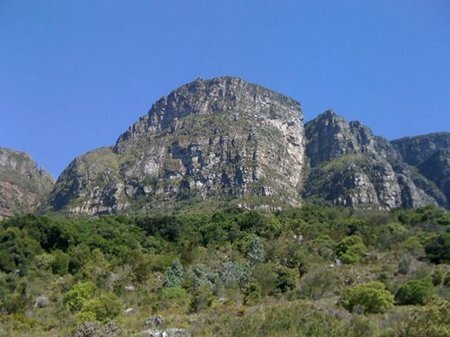
I’m pleased to report a different state of affairs this year. No sooner than 5 minutes after arriving at Kirstenbosch on Saturday (10:15am) an immature Honey Buzzard caught my attention. I was far from prepared for this early kick-off and only managed to rattle off a couple of shots before my camera’s card was full. Nevertheless, I managed to capture this image, which shows the diagnostic features.
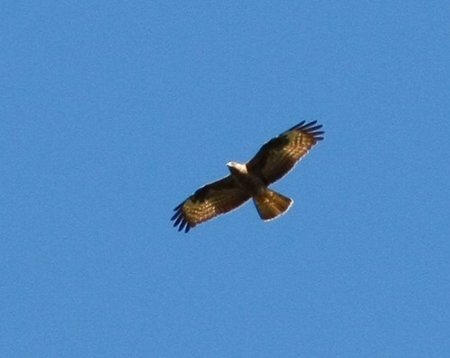
Honey Buzzard (immature)
I’m amazed how frequently I see African Harrier Hawk in the Southern Suburbs these days. I can still recall painstakingly trying to track my lifer down in the Warmbaths area back in the early 90′s as it was particularly uncommon in the Western Cape at that time. On Saturday I was entertained by two adult birds completing an extensive aerial display that lasted at least 30 minutes. One of the birds would complete a series of consecutive dives and sharp vertical rises, shaking its wings just at the top of each rise, while the other circled below.
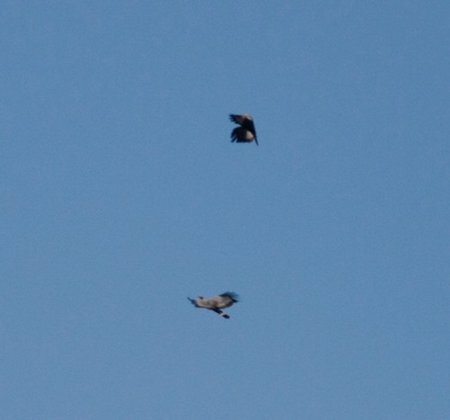
African Harrier Hawks displaying
Roberts reports the following regarding such displays:
In breeding display, 1 (sometimes both) of pair sours high in air, in slow and buoyant flight, usually silent. Sometimes makes shallow undulations with exaggerated wing fluttering. Sometimes male stalls, falls backwards and drops into a dive; may dive on soaring female, who turns onto her back and extends legs so that they briefly tough claws. Such flights average 20 minutes (11 – 33 minutes, n = 10).
In-between soaring Honeys and displaying Harrier Hawks there were a smattering of Steppe Buzzards (probably 5 individual birds in total), a lone Rock Kestrel, a distant Booted Eagle, an immature African Fish Eagle (below) and at least one vocal Forest Buzzard. I was chuffed with the Fish Eagle, it’s only the second time I’ve seen this species at Kirstenbosch and interestingly the last time it was also an immature.
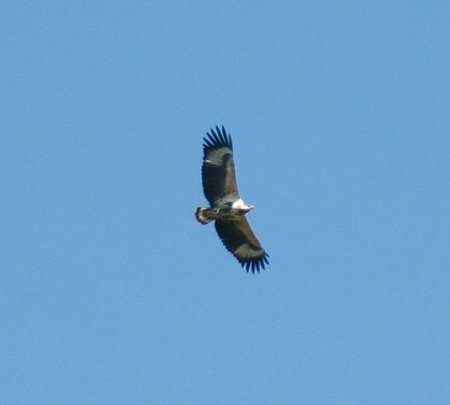
African Fish Eagle (immature)
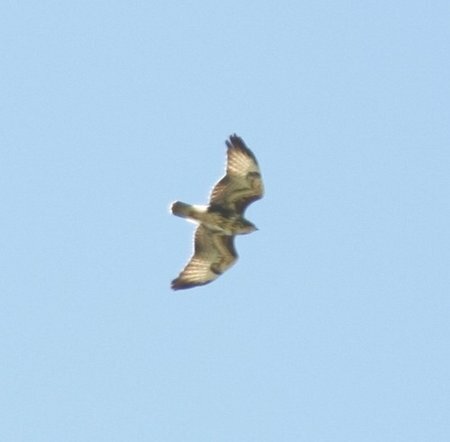
Forest Buzzard
Thinking the morning couldn’t get any better, whilst photographing a passing buzzard my attention was drawn to a soaring falcon, which struck me by its long-tailed and winged appearance and its dissimilarity with expected falco species. The bird was fairly distant, but I managed to snap a few record shots, which I circulated for comment here earlier this week. Below are two of the images.
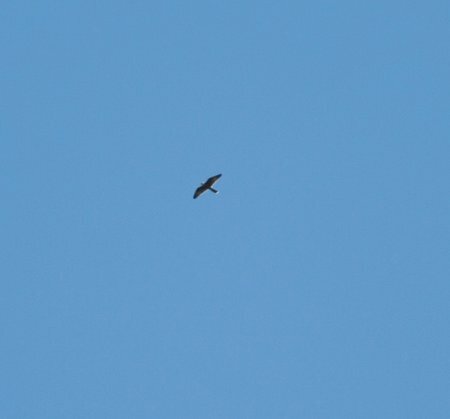

My suspicions at the time, and now following input from a variety of raptor experts, is that the bird may have been an Eleonora’s Falcon. Other suggestions from people have included Lanner, Peregrine and European Hobby. Out of interest, John Graham recorded an Eleonora’s Falcon at Kirstenbosch back in 2006 and managed to grab a few shots of the soaring bird. Subsequent to his sighting he created this series of photos, which includes his Kirstenbosch bird on the left and then an Eleonora’s image from the web for comparison.
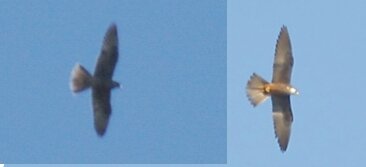
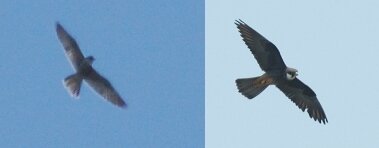
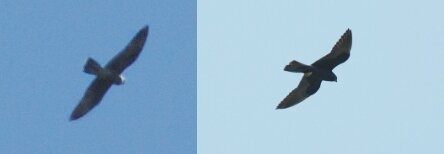
I also consulted raptor expert Dick Forsman (www.dickforsman.com) and this was his response:
I can only agree with you, that the bird in the image is a young dark morph Eleonora’s Falcon. The falcon is young because of its prominent white tail-tip and trailing edge to the wing. Identifying it as an Eleonora’s is to push it a bit, as some juv Hobbies can look extremely similar when viewed against the light and in slightly blurred images like this. However, in this case I believe, that what we see is also the actual truth.
So, all in all it was an action-packed morning that produced no less than 8 raptor species. Raptor watching can be a pot-luck affair, but I’ll certainly be putting in some more time this weekend so feel free to join me if you’re keen to catch up with some of the Peninsula’s raptors.
David Winter
Kirstenbosch bird list: Sombre Greenbul, Cape Sugarbird, Swee Waxbill, Cape Canary, Orange-breasted Sunbird, Cape White-eye, Forest Canary, Steppe Buzzard, Forest Buzzard, Honey Buzzard, Booted Eagle, Rock Kestrel, African Harrier Hawk, African Fish-Eagle, Southern Boubou, Paradise Flycatcher, Cape Batis, Black Saw-wing, Bar-throated Apalis, Cape Robin-Chat, Red-winged Starling.











Leave a Reply